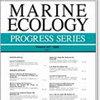Spatio-seasonal variations in functional trait composition and diversity patterns of marine fish communities in coastal waters
IF 2.1
3区 环境科学与生态学
Q2 ECOLOGY
引用次数: 0
Abstract
ABSTRACT: Despite the consensus that the distribution of functional traits within a community provides insights into community assembly and maintenance mechanisms, few studies have explored spatio-seasonal variations in the functional patterns of marine fish communities. Seven functional traits within the context of 2 distinct groups—habitat use and trophic niche—were selected to assess functional richness (FRic), functional evenness (FEve), and functional dispersion (FDis) across various spatio-seasonal scales. Community-weighted mean redundancy analysis (CWM-RDA) was used to identify the impact of environmental factors on dominant traits. We found seasonal and spatial variations in dominant traits of the fish community, notably influenced by the latitudinal-depth gradient (from shallower stations in the north to deeper stations in the south), east-west (longitudinal) dynamics, and temperature gradient. Latitude was negatively correlated with the CWM values of most functional trait categories. FRic showed more pronounced seasonal variations than other indices, with higher values observed in autumn. Fish assemblages displayed more similarity in functional traits in winter than in other seasons, with lower FRic, higher FEve, and lower FDis. Overall, our findings illustrate that fish assemblages undergo continuous formation and dissolution across different seasons and zones, resulting in various forms of functional diversity patterns.沿海水域海洋鱼类群落功能特征组成和多样性模式的时空变化
摘要:尽管人们一致认为,群落内功能特征的分布有助于深入了解群落的组成和维持机制,但很少有研究探讨海洋鱼类群落功能模式的季节性变化。我们选择了两个不同群落--栖息地利用和营养生态位--中的七个功能特征,以评估不同时空-季节尺度上的功能丰富度(FRic)、功能均匀度(FEve)和功能分散度(FDis)。利用群落加权平均冗余分析(CWM-RDA)来确定环境因素对优势性状的影响。我们发现,鱼类群落优势性状的季节和空间变化主要受纬深梯度(从北部较浅的站点到南部较深的站点)、东西(纵向)动态和温度梯度的影响。纬度与大多数功能特征类别的 CWM 值呈负相关。FRic 的季节变化比其他指数更明显,秋季的数值更高。与其他季节相比,冬季鱼群的功能特征显示出更大的相似性,FRic较低,FEve较高,FDis较低。总之,我们的研究结果表明,鱼类集合体在不同季节和区域不断形成和解体,从而形成了各种形式的功能多样性模式。
本文章由计算机程序翻译,如有差异,请以英文原文为准。
求助全文
约1分钟内获得全文
求助全文
来源期刊

Marine Ecology Progress Series
环境科学-海洋学
CiteScore
5.30
自引率
8.00%
发文量
238
审稿时长
3 months
期刊介绍:
The leading journal in its field, MEPS covers all aspects of marine ecology, fundamental and applied. Topics covered include microbiology, botany, zoology, ecosystem research, biological oceanography, ecological aspects of fisheries and aquaculture, pollution, environmental protection, conservation, and resource management.
 求助内容:
求助内容: 应助结果提醒方式:
应助结果提醒方式:


